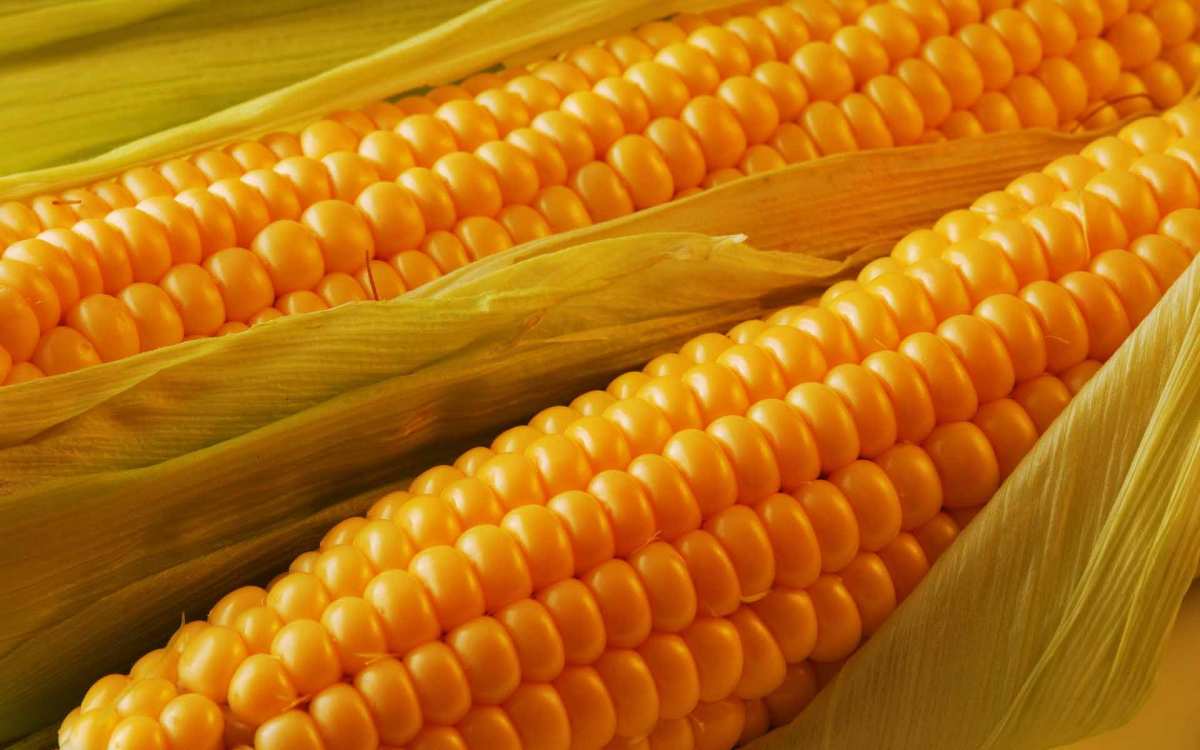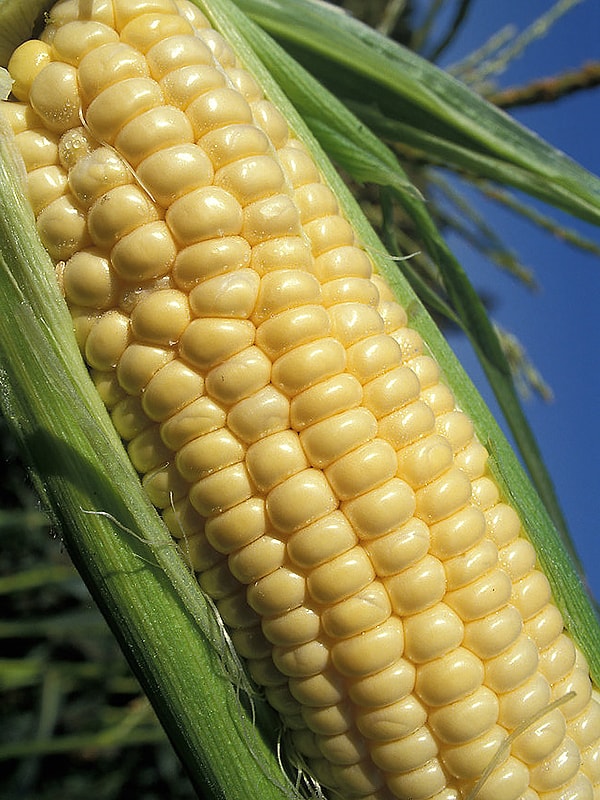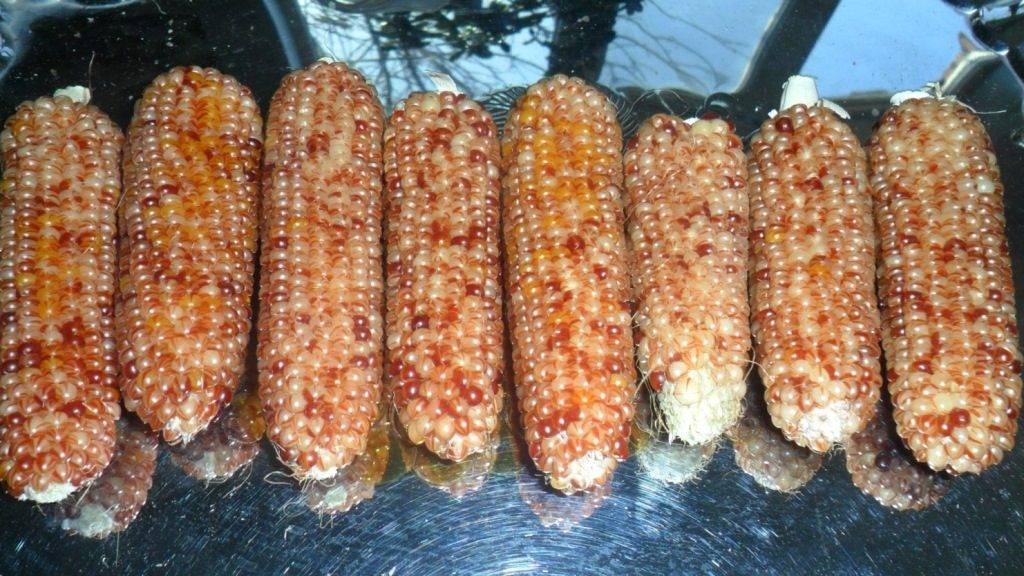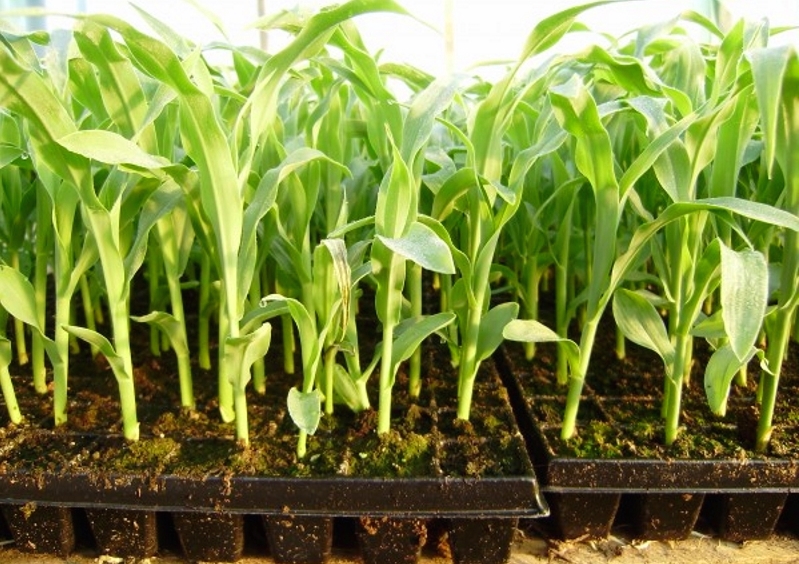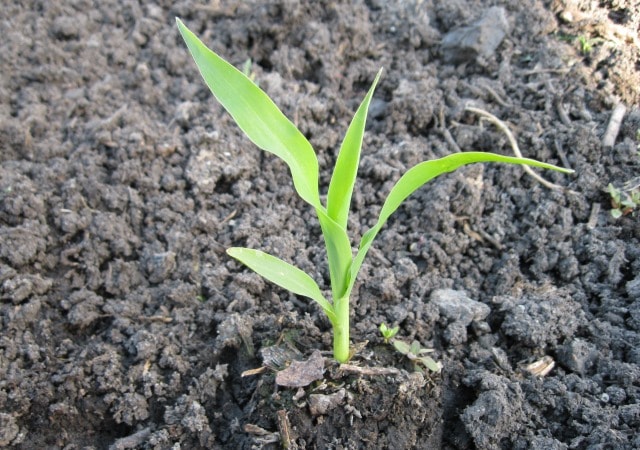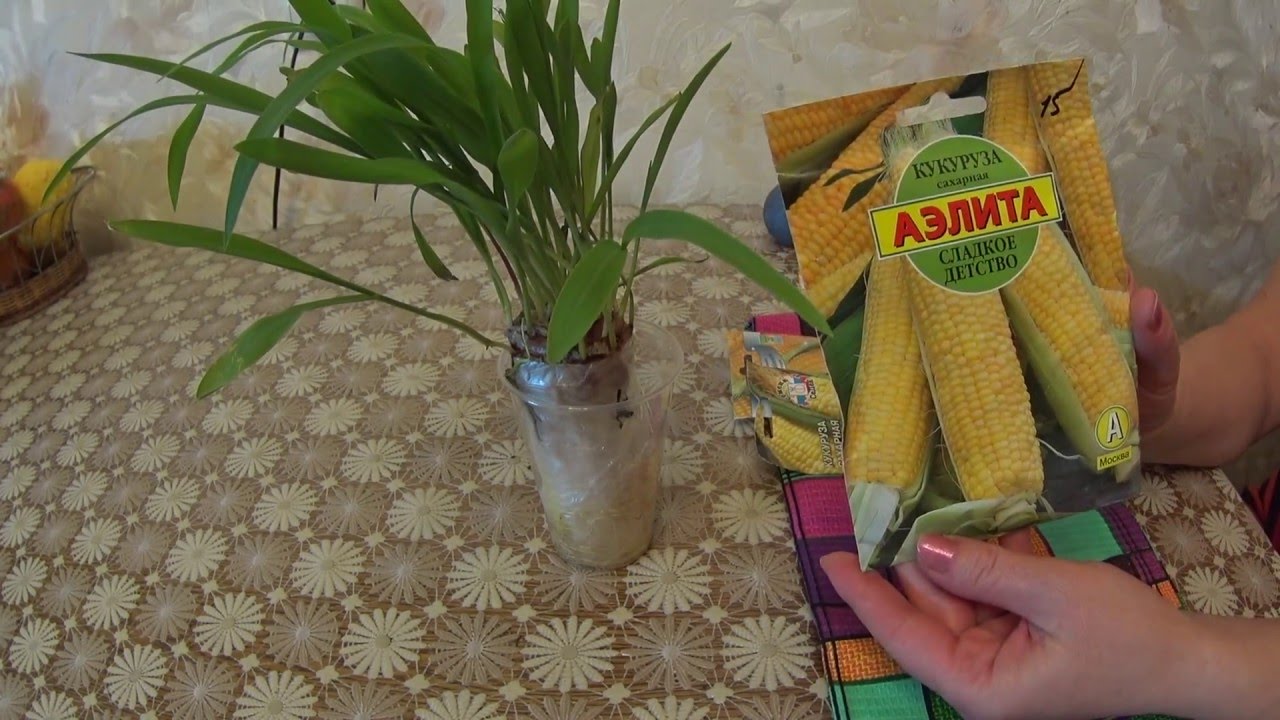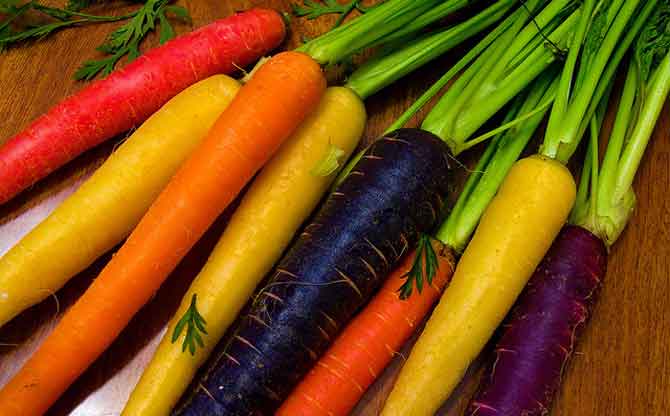Content:
Corn is a very valuable and useful product. It is not for nothing that this culture is called “the queen of the fields”, the breadwinner, the second bread. But few know that mankind has developed a huge number of hybrid varieties of corn over the centuries-old history of the existence of this cereal.
Main characteristics
Corn is an annual herb. On average, it can reach a height of about 3 m, the leaves germinate up to 1 m. The corn cob has male flowers at the top of the plant's shoots and female flowers, connected in inflorescences in the leaf axils. Each ear is protected by a dense wrap in the form of several layers of leaves.
Corn is grown all over the world, the leading positions are taken by the USA, China and Brazil. The cereal gained wide popularity not only due to its taste, but also for the benefits and valuable properties concentrated in the grains and leaves of the plant.
Components contained in corn:
- vitamins of group B, K, PP, C, D;
- trace elements: copper, nickel, magnesium, phosphorus, potassium;
- tocopherols;
- thiamine hydrochloride;
- pyridoxine;
- riboflavin;
- pantothenic acid;
- fatty oil (up to 5%);
- biotin.
According to scientific evidence, frequent consumption of corn kernels prevents the development of diabetes, vascular and heart disease, and stroke. The product dulls the feeling of hunger well, therefore, cereals are also included in the diet in the fight against excess weight. However, it should be borne in mind that corn grains and products based on them are high in calories and can harm the body.
Corn varieties
The breeding of cereals has gone through a long period of development. Today, in our country, there are about 500 varieties of corn with a wide variety of colors. Each species differs both externally (in color) and in taste and ripening times. The cereal is predominantly yellow, but there are colored corn - black corn, red, purple, blue (Hopi corn) and colorful corn (Glass Gem). The latter is not edible, nor is the strawberry corn variety. These varieties are grown for decorative purposes to create various crafts.
Among the main types, the following varieties of corn are distinguished.
Sugar (honey)
It is considered the most common species that grows in many countries. It differs from other varieties in its high sugar content. It is soft, tasty and fast growing. The grains are yellow. White corn is suitable for cooking. This type includes a huge number of subspecies:
- early ripening varieties - 65-75 days - Dobrynya, Voronezhskaya 80-A, Early Golden Corn, Sundance (sun dance) and Super Sundance (F1), Spirit (F1), Creamy nectar (F1), Molasses (F1), Trophy ( F1), Sheba (F1), Legend (F1), Haveest Gold, Bloody Butcher, Honey-Ice Nectar;
- mid-late - 75-90 days - Divine paper 1822, Merkur (F1), Bonus (F1), Megaton corn (F1), Challenger (F1), White Cloud, Krasnodar, Sweet Nugget, Krasnodar Sugar 250, Donskaya tall, Pioneer, corn Sochi, Boston (F1), or Syngenta;
- late - 85-95 days - Ice nectar, Triple sweetness, corn Gourmand Belogorie, Kuban Sugar, Athlete 9906770, Gold, Polaris.
Waxy
Corn kernels have a double outer layer, which creates the effect that the grain is covered with wax. The waxy variety arose as a result of mutation, under the influence of external natural factors. The color of the grains can be either yellow, red or white. This species is not so widespread, since it is less viable and gives little yield. Mainly grown in China. The main purpose is the production of starch. Among the varieties of this variety are:
- Oaxacan red;
- Nacre;
- Strawberry corn.
Tooth-shaped
The ear is yellow. When ripe, small depressions appear in the middle of the grains like a tooth (hence the name). Differs in high productivity, resistant to external factors. The USA is the leader in the cultivation of this species. Dent corn is used for food and for animal feed, as well as flour, starch and alcohol are produced from grains. Varieties:
- Indian pomegranate;
- Ruby garnet;
- Syngenta;
- Blue Jade.
The only negative is long ripening (from 60 to 120 days, depending on the species).
Siliceous (Indian)
It has round grains with a convex top of the cob. The color can be varied. Just like the previous variety, it is very viable, gives a large yield and ripens in the shortest possible time. The siliceous variety contains a large amount of starch in solid form. They are mainly used in the production of cereals, flakes, as well as in boiled food. Subspecies:
- Cherokee Blue;
- Mays Ornamental;
- Flint 200 CB.
Starchy
The grains are white or yellowish in color, round in shape. It contains a large amount of soft starch, due to which it is grown for the production of flour, molasses, alcohol. In addition, the product is sweet enough that it can be used boiled. You can meet this variety in the USA and South America. Popular hybrids:
- Mays Concho;
- Thompson Prolific.
Bursting
A distinctive feature is that the grains contain a large amount of protein. The upper cover of the grain has a hard layer, and close to the embryo it is loose, which, when heated, bursts, breaking the shell under the pressure of moisture evaporating inside. It is widely used all over the world for the production of popcorn. Popular subspecies:
- Miracle Bump;
- Mini Striped;
- Red Arrow;
- Volcano;
- Lopai-Lopai;
- Zeya.
Oerlikon and Dneprovskaya 925 are grown in Russia.
Popular varieties
The most popular are the Flint and Toothed maize varieties. Their advantage is their high starch content and low mealy content. Most of the products sold on the shelves are made from these varieties (for example, canned corn Green Ray and Honi Bentham, Frau Marta, Heinz, and also corn oil Corona). The most popular are the following subspecies:
| Variety | Ripening period (days) | Feature |
|---|---|---|
| Syngenta | 65-75 | has a yellow color, up to 20 ears grow on one plant, belongs to the early varieties |
| Pioneer | 75-90 | grains of yellow color, spring frosts are not harmful, highly appreciated by farmers for their unpretentiousness |
| Spirit | 65-75 | not susceptible to pests and fungal infections, abundant harvest, does not require special care |
How to grow
Growing corn outdoors is not difficult. It is enough just to follow some recommendations:
- the meadow for cereals should be open, but at the same time protected from strong winds and have access to a light source;
- the soil with a high acidity level must be prepared in the fall (add 3 kg of lime to 10 sq. m, then dig up 1 bucket of peat and sand, as well as compost for 1 sq. m);
- by spring, the soil should be dug again with the addition of mineral fertilizers;
- best planted in an area where strawberries, potatoes, or legumes have been a precursor.
Corn is grown from corn seeds and seedlings. The most famous and largest producer selling seeds is Monsanto. When landing, you need to take into account the climatic conditions of the region. The soil should warm up to at least 10 ° C, so it should not be planted earlier than March. Before planting, the seeds should be treated with a manganese solution and kept in water for at least 12 hours. Then pour out the liquid and cover the seeds with thick wet gauze until the seeds begin to germinate. The fabric must be constantly wetted. After germination, you can start planting in the ground. It is advisable to plant the cereal in 4 rows, so that the pollination process occurs crosswise.
Corn seedlings are usually planted in boxes. At the same time, the soil should be well fertilized: sand, peat, compost, ash. After the emergence of seedlings, the sprouts are transplanted into open ground not earlier than June.
How to care
The final positive result largely depends on proper care. The plant needs to be watered moderately. With frequent watering, the risk of developing fungus increases. With insufficient moisture, the fruits will be tough and tasteless. The soil should be loosened from time to time. After a month after planting, the soil can be fertilized with bird droppings, alternating the method with the use of other mineral fertilizers. To get a good harvest, you need to manually pollinate the plant.
Prevention and treatment of diseases, pest control
The main diseases of corn are smut, rust, spotting, nigrosporosis. Pests such as corn stalk moth, cotton moth and grain moth are also harmful. To prevent the development of the disease, you need to constantly monitor and care for the plant. You can fight pests chemically (using insecticidal preparations) and biological (used against pests of their natural enemies).
Due to the variety of varieties, corn can be used in many different ways. So, flour, starch are produced from gold grains, oil is squeezed out, alcohol is made, as well as feed for farm animals. To ensure a good harvest, do not forget about the importance of timely plant care.
